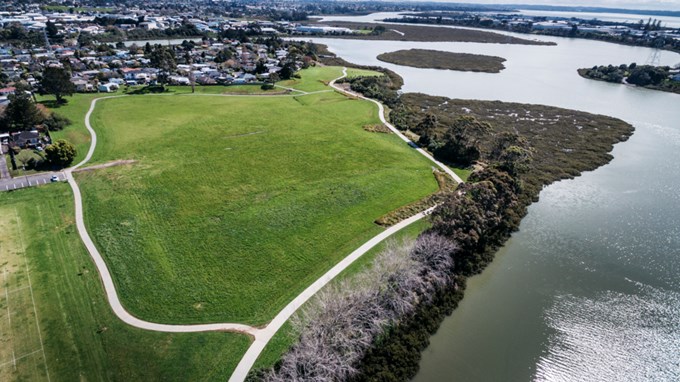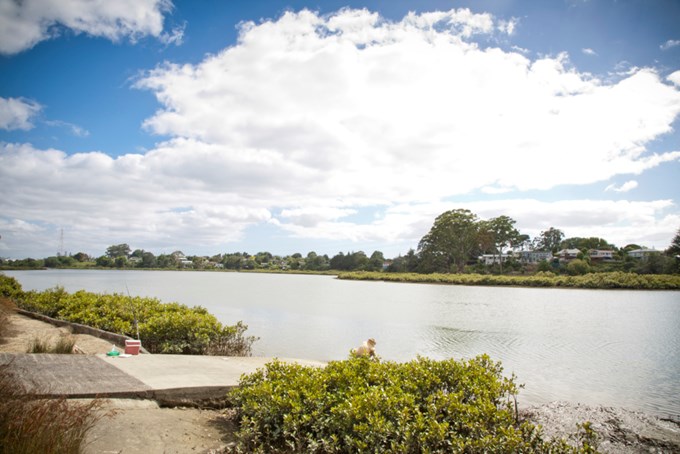As Auckland continues to grow, our harbours, beaches and streams face an increased risk of pollution from ageing stormwater and wastewater networks that are struggling to cope with heavy rainfall and from contaminants washed into waterways.
In its 10-year Budget, council has proposed a targeted rate of $66 per year for the average residential ratepayer to pay for water infrastructure to fix the problem over 10 years rather than 30 years. Council’s Governing Body will decide on the budget in June.
“There’s no doubt that we have a serious issue in the Whau and throughout Auckland with the quality of our waterways,” says Whau Ward Councillor and Chair of the Finance and Performance Committee Ross Clow.
“We need to make significant investment in our water infrastructure to help manage stormwater and to reduce wastewater overflows which are causing harm to our environment.”
“I want to see the Whau Estuary restored to its clean, natural state. I want children to be able to swim in the Whau River without worrying about pollution.”
“Better opportunities for recreation are being created along the Whau River with the construction of Te Whau Pathway. Clean water is vital for swimming, fishing and using watercraft.”
There is strong public support for a targeted rate to improve water quality with 61 per cent supporting it in the budget consultation.
Auckland Council’s Healthy Waters Department and Watercare are working together to improve water quality. One important project is the Western Isthmus Water Quality Improvement Programme, which includes the Whau area. The estimated the total cost of this programme is $1.85 billion, to be delivered over the next 10 years.
The problem
Areas within Auckland’s Western Isthmus are served by wastewater and stormwater drainage systems which date back to the late 1800s. The Western Isthmus includes an upper portion of the Whau stormwater catchment that drains to the Waitematā Harbour. Any overflows to the water courses within the Whau stormwater catchment discharge to the Whau River where the tide moves the water in and out of the estuary.
The drainage systems on the Western Isthmus consist of separate wastewater and stormwater systems and includes combined sewer systems. Combined sewer systems consist of one pipe to convey both wastewater and stormwater, and are common in cities of a similar size and age to Auckland.
During rain events the overflow points within the Western Isthmus discharge a dilute mixture of urban stormwater and wastewater into urban streams and also directly into the Waitematā harbour. This can result in no swimming alerts at beaches through our Safeswim programme with impacts on other important cultural and community values.

The solution
Over the past seven years a number of projects have been completed in the Whau stormwater catchment to reduce wastewater overflows, provide for growth and improve water quality, including branch sewer upgrades, a wet weather wastewater storage tank and separation of a combined sewer.
Building on this, a programme of investment has been developed including:
- Optimising the use of Watercare’s planned Central Interceptor. The Central Interceptor is a 4.5m diameter wastewater tunnel that will convey wastewater and store peak wet weather flows for treatment at the Mangere Wastewater Treatment Plant.
- A mixture of local wastewater upgrades, progressive separation of the combined system, and a reduction of stormwater entering separate wastewater pipes through illegal connections and cracked pipes.
- Measures to ensure adequate treatment of wastewater and peak wet weather flows arriving at the Mangere wastewater treatment plant.
- Measures to ensure adequate treatment of urban stormwater discharges to receiving environments.
- Construction of the Northern Interceptor which will increase wastewater network capacity by redirecting flows from the northwest towards the Rosedale Wastewater Treatment Plant, rather than through the network to Mangere.
The proposed plan is in line with international best practice, and designed to deliver capacity for the projected growth in the Western Isthmus, and to substantially improve Western Isthmus waterways and bathing beaches including Safeswim compliance.


